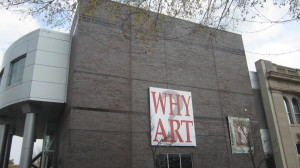
I say the arts are necessary. The ability to create is what makes us human. To deny access and participation in the arts is to destine us to become less human–which is what we are witnessing today. The arts teach us many skills that could help to remedy some of the ills of society we suffer from. Having worked in the arts most of my life, I have been witness to the power of art: the power to lift up a student that has not been nurtured at home; the power to allow an unsuccessful student to find a path to achievement; the power of transcendence for someone who battles addictions; the power to envision a future for those who can see no way out of their situation; the power of healing for those who battle with mental health; the power of imagination to drive invention and innovation; the power that comes from mastering a discipline.

Currently, one way that AMoA impacts area students and teachers is by providing online teacher resources (including curriculum tied to current exhibitions) and Visual Thinking Strategies (VTS) in school tours. VTS is an inquiry based approach to art viewing that promotes analytical thinking skills. Additionally, the Museum is bringing this program into classrooms in three Title I schools and two area high schools, as well as classrooms of English language learner students and Autistic students. Longitudinal studies have shown that even 10 sessions a year can greatly increase student performance in reading, writing and verbal skills. Our educators are working to teach classroom teachers to use this literacy program—wrapped in art viewing—regularly in their classrooms. This is one way that AMoA is bringing the power of the arts to Central Louisiana students in order to improve their chances for success.
I invite you to invest in the power of art by becoming a member of the Museum today.
See you at the Museum!









